The figure shows a cross-section through a very large nonconducting slab of thickness and uniform volume charge density The origin of an -axis is at the slab's center. What is the magnitude of the slab's electric field at an -coordinate of and
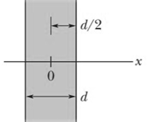


Important Questions on Gauss' Law
The figure shows two nonconducting spherical shells fixed in place. Shell has uniform surface charge density on its outer surface and radius ; shell has uniform surface charge density on its outer surface and radius the shell centers are separated by In unit-vector notation, what is the net electric field at
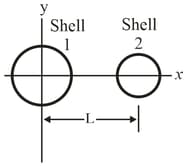
Figure shows three plastic sheets that are large, parallel, and uniformly charged. Figure gives the component of the net electric field along the -axis through the sheets. The scale of the vertical axis is set by What is the ratio of the charge density on sheet to that on sheet ?
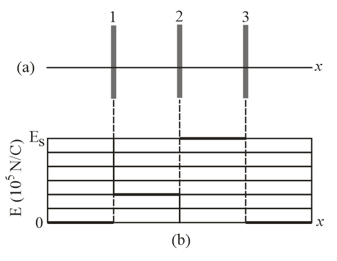
Flux and conducting shells. A charged particle is held at the center of two concentric conducting spherical shells. Figure shows a cross section. Figure gives the net flux through a Gaussian sphere centered on the particle, as a function of the radius of the sphere. The scale of the vertical axis is set by . What are the charge of the central particle and the net charges of shell and shell ?
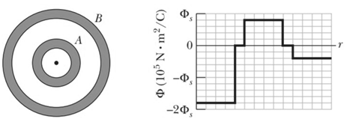
(a) (b)
When a shower is turned on in a closed bathroom, the splashing of the water on the bare tub can fill the room's air with negatively charged ions and produce an electric field in the air as great as Consider a bathroom with dimensions Along with the ceiling, floor, and four walls, approximate the electric field in the air as being directed perpendicular to the surface and as having a uniform magnitude of . Also, treat those surfaces as forming a closed Gaussian surface around the room's air. What are (a) the volume charge density and (b) the number of excess elementary charges per cubic meter in the room's air?
A charged particle is suspended at the center of two concentric spherical shells that are very thin and made of nonconducting material. Figure (a) shows a cross-section. Figure (b) gives the net flux through a Gaussian sphere centered on the particle, as a function of the radius of the sphere. The scale of the vertical axis is set by (a) What is the charge of the central particle? What are the net charges of (b) shell and (c) shell
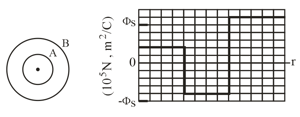
(a) (b)
The figure given below is a section of a conducting rod of radius and length inside a thin-walled coaxial conducting cylindrical shell of radius and the (same) length The net charge on the rod is that on the shell is . What are the (a) magnitude and (b) direction (radially inwards or outwards) of the electric field at radial distance What are (c) and (d) the direction at What is the charge on the (e) interior and (f) exterior surface of the shell?

